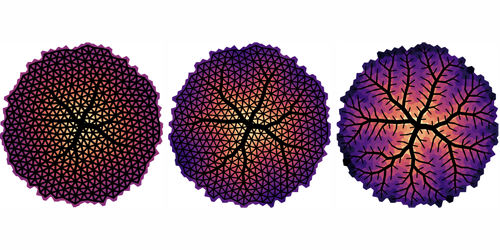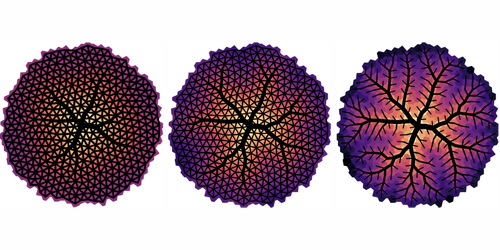Evolving Efficient Networks
A complex network of capillaries, veins, and arteries ensures that blood flows efficiently from the tips of our toes to the tops of our heads. Genes play a role in determining global vascular structures, but they don’t encode the precise positions and diameters of each of the thousands of vessels in the human body. How then do networks optimal to life arise? Henrik Ronellenfitsch and Eleni Katifori from the University of Pennsylvania, Philadelphia, have developed a new model that accounts for the growth of the underlying tissue in tandem with the development of the network it contains. This coupling drives the network to optimize for efficient fluid flow without the need for complex chemical cues or any preencoded guiding pattern.
The duo considered a two-dimensional tissue, growing uniformly in all directions. A network with equally spaced nodes overlays the tissue, with each node connected to its nearest neighbor via a vessel with a randomly assigned diameter. The team developed an adaptive feedback model, which incorporates vessel conductivity and tissue growth, to update the vessels’ diameters as growth proceeds: When blood flow increases, the vessel get wider, and vice versa. As the tissue grows and the network develops, Ronellenfitsch and Katifori observe the development of a highly hierarchical network, with large arteries appearing first, followed by smaller veins and capillaries. The hierarchical networks strongly resemble those seen in the human body, for example, in retinas, as well as in plant leaves, and they don’t develop when tissue growth is turned off. The networks obtained by Ronellenfitsch and Katifori are also significantly more efficient at transporting fluids.
This research is published in Physical Review Letters.
–Katherine Wright
Katherine Wright is a Contributing Editor for Physics.





